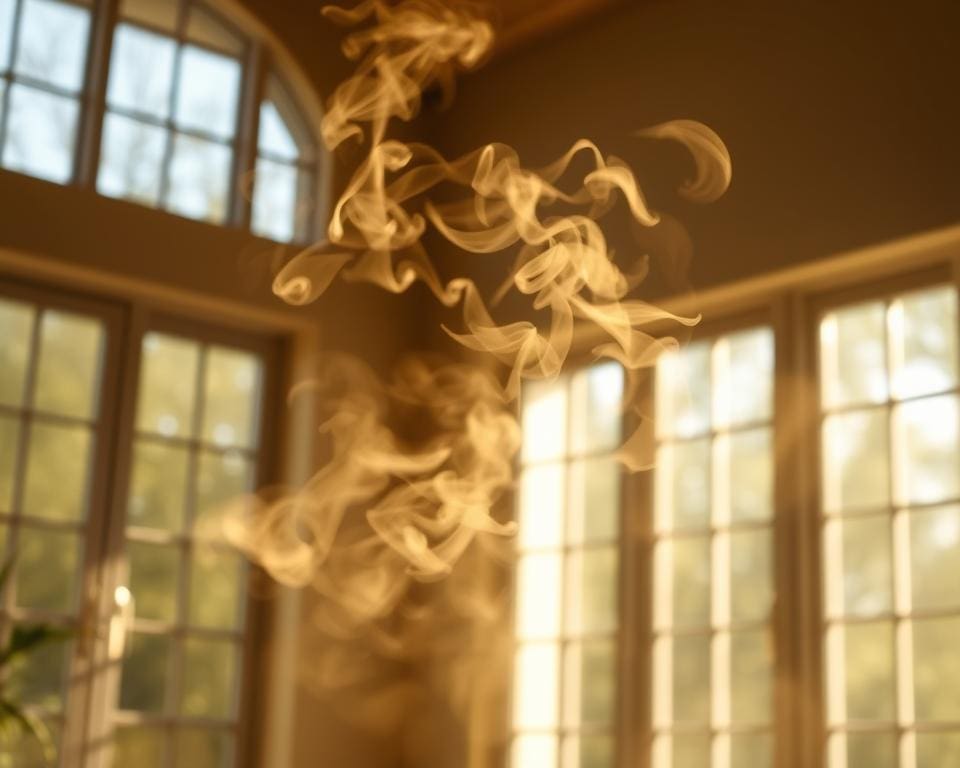The aroma of cannabis is not only distinctive but also raises intriguing questions about how far it can travel. Understanding how far weed smell can disperse is vital for both users and neighbours alike, particularly in urban environments where close proximities exist. Research indicates that the cannabis scent can travel impressive distances, influenced by various environmental factors. This exploration into the distance weed smell travels will delve into the science of cannabis scent dispersion, shedding light on its implications for privacy and legality.
Understanding Cannabis Aroma
The distinct aroma of cannabis plays a crucial role in its allure and appeal. Recognising what constitutes the smell of weed enhances the overall experience for both casual users and connoisseurs. The complexity of the cannabis aroma spread is primarily attributed to a variety of aromatic compounds known as terpenes. Each strain boasts a unique combination of these compounds, contributing to its specific fragrance profile.
What Constitutes the Smell of Weed
The smell of cannabis is determined by the various terpenes present in the plant. These compounds are responsible for creating a myriad of scents, ranging from fruity and citrusy to earthy and piney. Some common terpenes include:
- Myrcene: Often associated with an earthy aroma, it can also impart subtle fruity notes.
- Limonene: Best known for its citrus scent, it adds a refreshing quality to certain strains.
- Pinene: This terpene is reminiscent of pine forests, giving cannabis a fresh, woody character.
Understanding these components enhances appreciation for the marijuana scent range, allowing users to select strains based on personal preference. The intricacies of these aromas can significantly influence the enjoyment and effects of cannabis consumption.
The Chemical Compounds in Cannabis
At the heart of the cannabis aroma lies a complex interaction of chemical compounds in cannabis. These compounds work in conjunction with cannabinoids, like THC and CBD, to create an array of effects and experiences. The interplay between the terpenes and cannabinoids is often referred to as the “entourage effect,” highlighting the importance of understanding the full spectrum of components in cannabis. This awareness can guide consumers in choosing products that best suit their needs.

How Far Can Weed Smell Travel
Understanding the distance cannabis scent can travel is crucial for cultivators and residents alike. Various elements play a significant role in scent dispersion, including natural and environmental factors that impact the cannabis odour distance. These influences determine not only how far the fragrance might waft but also how concentrated it remains.
Factors Affecting Scent Dispersion
Certain factors can dramatically alter the travel distance of weed fragrance:
- Wind direction and speed: High winds can carry odours over considerable distances, while still air may trap them in localized areas.
- Humidity levels: Increased moisture can enhance marijuana odour transmission, allowing scents to permeate more acutely.
- Ambient temperature: Warmer temperatures typically facilitate greater diffusion of terpenes, the aromatic compounds in cannabis, contributing to wider scent spread.
- Geographical barriers: Structures like buildings or natural features, such as hills, can impede the movement of scent, limiting its range.
Environmental Influences on Cannabis Odour Distance
The surrounding environment plays a pivotal role in altering the weed fragrance travel distance. For instance, urban settings with numerous buildings may trap odours, causing a stronger local presence, while open areas enable scent to disperse more freely. The effects of environmental conditions on marijuana odour transmission can often dictate the experiences of cultivators and neighbours, which is essential for managing perceptions about cannabis cultivation.
Marijuana Scent Range and Its Implications
The aroma of cannabis extends beyond the growing space, creating an intimate connection between cultivation practices and the surrounding community. Understanding the marijuana scent range is crucial for those involved in cannabis cultivation as it can significantly impact relationships with neighbours. Strong, pervasive scents may lead to discomfort and increased complaints, potentially straining community ties.
Potential Impact on Neighbours
A prominent marijuana scent range can have various implications for residential harmony. When the fragrance becomes overwhelming, it might affect neighbours’ quality of life, resulting in:
- Increased tensions within the community.
- Potential for complaints or disputes.
- Negative perceptions of cannabis culture.
Awareness of how cannabis scent dispersion reaches neighbouring properties can help cultivators mitigate adverse reactions. Ensuring that odour control measures are in place is a vital step in promoting a peaceful coexistence.
Legal Considerations Around Scent and Proximity
Legal considerations around scent form an important aspect of cannabis legislation. In regions where cannabis cultivation is legal, guidelines often address acceptable odour levels to prevent conflicts. Understanding local ordinances regarding cannabis scent dispersion can ensure compliance and foster goodwill. Key legal aspects may include:
- Regulations on cannabis cultivation proximity to residential areas.
- Standards for odour control technologies required by law.
- Potential penalties for non-compliance with scent regulations.
Being informed of these considerations empowers cannabis growers to cultivate responsibly and maintain productive relationships within their communities.
Strategies to Minimise Weed Fragrance Travel
Creating an environment that limits the travel of cannabis scent involves thoughtful planning and implementation. Employing effective home cultivation practices paired with advanced cannabis odour reduction techniques can play a crucial role in managing and minimising odour emissions.
Home Cultivation Practices
Several home cultivation practices are essential for reducing the aroma associated with cannabis. These methods not only create a more discreet growing environment but also enhance the overall experience for growers. Key practices include:
- Using carbon filters to extract odours during the ventilation process.
- Implementing sealed grow rooms equipped with proper airflow management.
- Utilising fans strategically placed to optimise air circulation while containing scents within the grow area.
- Choosing specific cannabis strains known for lower odour output, which are increasingly popular among growers aiming to maintain discretion.
Utilising Odour Neutralisers
In addition to cultivation techniques, employing effective odour neutralisers can significantly assist in masking or eliminating unwanted cannabis scents. Various products and approaches can enhance privacy and maintain a pleasant environment:
- Air purifiers capable of removing particulates and odour molecules from the air.
- Ozone generators that can neutralise strong smells, though they require cautious use.
- Scented candles and essential oil diffusers that create a more inviting atmosphere.
The Science Behind Cannabis Odour Transmission
The complexities of cannabis odour transmission unveil a fascinating intersection of chemistry and physics. Understanding the scent transmission principles is vital, as it reveals how terpenes—the aromatic compounds found in cannabis—travel through the air. These molecules interact with environmental factors such as temperature, humidity, and wind, which consequently influence the diffusion rates of these scents. Scientific studies have shown that under varying conditions, the distance cannabis aroma can travel may differ significantly, making environmental awareness paramount for both growers and consumers.
In exploring the scientific aspects of cannabis aroma, one discovers that temperature plays a critical role in the volatility of terpenes. Warmer air enhances the release of aromatic chemicals, leading to a more potent fragrance that can extend further into the surrounding environment. Conversely, cooler temperatures may suppress odour emission, reducing the distance at which the scent can be detected. This crucial knowledge empowers individuals to make informed choices regarding cultivation practices that can minimise scent dispersion, ultimately contributing to harmonious community relations.
Regulators and consumers alike benefit from a thorough understanding of cannabis odour transmission, as it holds implications for compliance and personal enjoyment. By grasping the science behind how scents propagate, stakeholders can develop strategies that respect both the natural properties of the plant and the expectations of the surrounding community. Awareness of scent transmission principles not only enhances the appreciation of cannabis but also fosters responsible practices in its cultivation and consumption.









